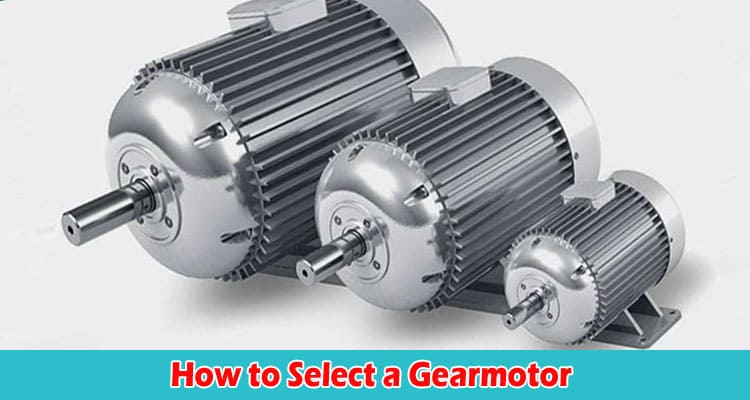Gear motor is the most popular engine at 2023, providing power and control to a wide range of machines and equipment. These powerful devices are essentially a combination of a gear reduction unit and an electric motor, working together to transmit power and control motion with precision and efficiency.
However, with so many different types and models available, it can be challenging to select the right gearmotor for your specific application. But don’t let this deter you.
This blog breaks down the selection process into four simple steps, providing you with the knowledge and tools to choose the perfect gearmotor for your application, whether you’re a seasoned engineer or new to industrial automation.
Step 1: Assessing Your Power and Torque Requirements
Step 1 in selecting the right gearmotor for your application is to assess your power and torque requirements. Power is dependent on the load and speed of your equipment, while torque is the rotational force needed to move the load.
Consider the specific demands of your application when assessing these requirements. A heavy load at a slow speed needs high torque, while a lighter load at a high speed needs high power. The operating environment should also be considered. Harsh conditions like high temperature and humidity need a gearmotor specifically designed for it.
In short, assess your application’s specific demands, load and speed, and operating environment to determine power and torque requirements. This will help in selecting the right gearmotor for your application.
Step 2: Choosing the Right Type of Gearmotor
Making the appropriate gearmotor type selection is step two in selecting the right gearmotor for your application. Gearmotors are available in a number of types, each with a special set of features and abilities. The most common types include:
- Right Angle Gearmotors: These gearmotors are designed to deliver high torque at a 90-degree angle. They are often used in applications where space is limited, such as conveyor systems and material handling equipment.
- In-Line Gearmotors: These gearmotors are designed to deliver high power and speed at a 0-degree angle. They are often used in applications where high speeds are required, such as packaging and labeling machines.
- Worm Gearmotors: These gearmotors are designed to deliver high torque at a 90-degree angle. They are often used in applications where a low speed and high torque are required, such as in material handling equipment and conveyors.
- Planetary Gearmotors: These gearmotors are designed to deliver high torque at a 90-degree angle. They are often used in applications where high precision and accuracy are required, such as robotics and automation.
When selecting a gearmotor, it’s important to choose the right type that fits your specific application. Each type of gearmotor has its own unique set of features and capabilities, so it’s essential to understand the requirements of your application and choose the right type of gearmotor that will meet those needs.
Step 3: Evaluating the Gearmotor’s Environmental and Mounting Requirements
The operating environment of your equipment plays a crucial role in determining the type of gearmotor that is suitable for your application. For example, if your equipment will be operating in a harsh environment, such as high temperatures or high humidity, you’ll need to select a gearmotor that is specifically designed for that environment.
Another important factor to consider is the mounting requirements of the gearmotor. Gearmotors come in a variety of mounting styles, such as foot-mounted, flange-mounted, and shaft-mounted. It’s important to choose a gearmotor that is compatible with the existing mounting system of your equipment.
Step 4: Considering Additional Features and Accessories
Depending on the specific demands of your application, there may be additional features or accessories that are required to ensure that your gearmotor is able to perform to the best of its abilities.
Some of the most common additional features include:
- Overload protection: This feature helps to protect the gearmotor from damage in case of excessive loads.
- Speed control: This feature allows you to control the speed of the gearmotor, which is useful in applications where precise speed control is required.
- Braking systems: This feature allows you to stop the gearmotor quickly and effectively, which is useful in applications where precise stopping is required.
Accessories such as encoders, limit switches, and remote controls can also be added to your gearmotor to enhance its functionality. These accessories can provide additional features such as position feedback, speed feedback, and remote control, which can improve the overall performance of your equipment.
Where can you find right gear motor? (Conclusion)
Selecting the right gearmotor is crucial to ensure the smooth operation of your equipment. Following the four simple steps outlined in this blog will lead to an informed decision that meets the specific demands of your application. Assessing power and torque requirements.
Doncen Motor is a professional gear motor manufacturer in China. Our engineer team provide 24/7 service for our customers to find suitable motors for their applications!







